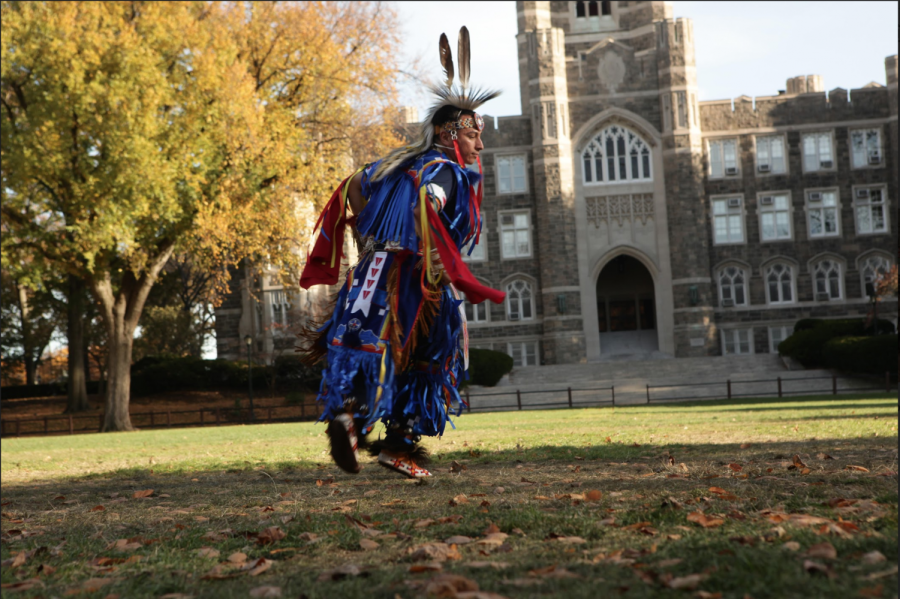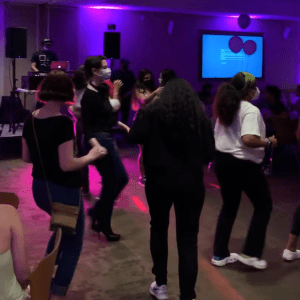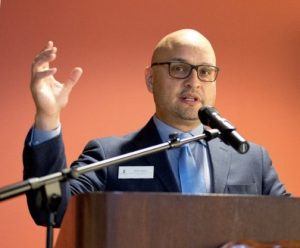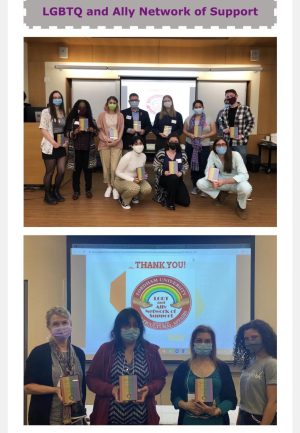Fordham Holds Few Events for Native and Indigenous Heritage Month
Celebrations and programming for Native American Heritage Month are minimal compared to other cultural months at Fordham
COURTESY OF TOM STOELKER/FORDHAM NEWS
Fordham College at Lincoln Center has experienced low involvement and engagement for events celebrating Native and Indigenous Heritage Month.
November 30, 2021
Native American and Indigenous Heritage Month is celebrated annually in November. Cultural clubs and the Office of Multicultural Affairs at Fordham often hold celebrations for heritage months such as Black History Month and Latinx History Month. Students have noticed that there have been fewer celebrations for Native American Heritage month and they have featured low student involvement.
Juan Carlos Matos, assistant vice president for Student Affairs for Diversity and Inclusion, noted a low level of participation in Native and Indigenous celebrations at Fordham in comparison to other cultural events Matos tried to change that by organizing events aimed at integrating Indigenous culture through activities at the Rose Hill campus.
“Whether or not there’s a student group or active presence, it’s important for us to really center and honor those experiences,” Matos said.
Fordham’s first celebration for Native American Heritage month began five years ago with the first annual Native American Festival in the Bronx.
They were met with little participation from Lincoln Center students.
Prior to the COVID-19 pandemic, the festival was open to the public, allowing Fordham students to build a better connection with the Bronx community while learning about Native American culture.
Due to the success of the Bronx celebrations, the committee introduced similar activities to the Lincoln Center campus. They partnered with the LGBTQ+ committee to host a two-spirit event at the Lincoln Center campus. Two-spirit is a term used in Indigenous culture to define the complexities of their spiritual, sexual, and gender identity. Despite the collaboration, they were met with little participation from Lincoln Center students.
“The only students that attended were Rose Hill students,” Matos said.
Two years ago, OMA restructured its student leadership model by creating cultural committees. Graduate students from any institution were invited to join an OMA committee centered on a cultural group, and they had the ability to organize and host events for that committee.
Currently, the Native and Indigenous People’s committee is overseen by graduate intern Marie Castro.
Matos explained that in the first year of this program, there was no committee for Native and Indigenous students at the Lincoln Center campus, despite recruitment efforts. The lack of student involvement impacted the committee’s ability to have events at the Lincoln Center campus.
Matos believes the lack of interest at Lincoln Center stems from general low enrollment rates of Native and Indigenous students at Fordham. For the class of 2025, less than 1% of incoming students identify as “American Indian.”
“If there were more opportunities, more classes, if more faculty members did intentional programming to celebrate or to honor and recognize Native Americans, that could help a lot.”Juan Carlos Matos, assistant vice president for Student Affairs for Diversity and Inclusion
“I’d love to have a larger population of Native and Indigenous students at Fordham in general,” Matos said. “As we build a stronger community, that may be more reason for Native and Indigenous students to have a reason to want to come to Fordham.”
Matos believes that fear of “misrepresenting the identity, or not doing it justice” or just not identifying with the community is the source of hesitation when it comes to participation in the Native and Indigenous cultural committee.
Matos and Castro continue to emphasize the importance of involvement in the Native and Indigenous committee, urging students to get involved by attending the events they hold.
Castro expressed that it is important to use Fordham’s curriculum and opportunities to educate students on Native and Indigenous culture.
Matos underscored the importance of recognizing Native and Indigenous heritage in other cultural clubs, events and programming.
“If there were more opportunities, more classes, if more faculty members did intentional programming to celebrate or to honor and recognize Native Americans, that could help a lot (with student engagement),” Castro said.
Matos underscored the importance of recognizing Native and Indigenous heritage in other cultural clubs, events and programming in order to “unlearn the idea that Native and Indigenous people have disappeared.”
This month, OMA has been able to include small but culturally significant events at the Lincoln Center campus, such as the “become a plant parent” event which discussed the significance of nature in Indigenous culture, the “Womxn paint night” and an event debunking the myth of Pocahontas.
OMA intends to hold their annual Native American Festival on Nov. 20 at the Rose Hill campus. To end the month they are highlighting the intersectionality of Hawaiian Native and Native American culture by hosting a Hawaiian Independence Day celebration debunking the misrepresentation of Hawaiian culture in the media.
Matos and Castro are hoping for continuous programming and more celebrations for both campuses.
“I would love to see the magnitude of the Native American festival and as grand as it has been at Rose Hill, have the same event be hosted at Lincoln Center,” Castro said. “I would like to have continuous programming throughout the year so people don’t forget or stop being allies when it’s not relevant.”
The Observer is Fordham Lincoln Center’s award-winning, 100% student-run newspaper. Donate to The Observer’s GiveCampus campaign to support student journalism today!













